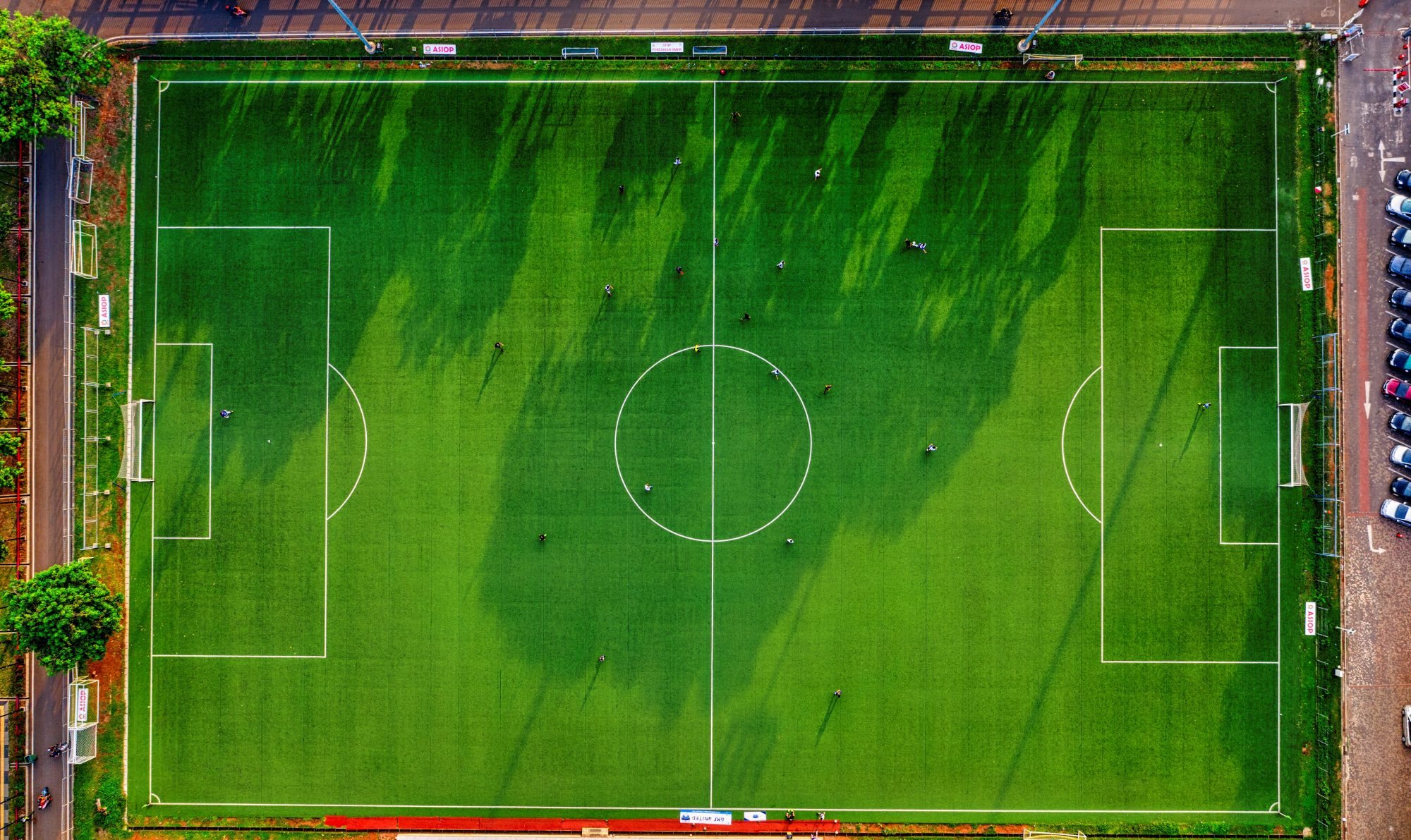
Some like to approach games in a disciplined structure, intentionally and meticulously dictating games to their own tempo. Others opt for a more emotionally-charged philosophy, reliant on the belief, energy and willpower of their trusted eleven on the field.
‘To control’ is often a proxy of press-and-possess footballing styles, where a team attempts to keep the ball and subsequently win it back in an organised setup that can be tweaked and adjusted. Substitutions might enter at any time, player roles might even change, but the team will still provide a similar output utilizing similar structures. This, often relates to the style of Roberto De Zerbi, Pep Guardiola, Xabi Alonso and so on. However, there is another route: ‘chaos’. These ideas target transitional moments where space is aplenty, and players can exploit physical weaknesses in the opposition alongside forcing them to make erratic movements. Those like Jürgen Klopp, Carlo Ancelotti and Thomas Frank epitomise this approach, despite their varied versions of chaos, and still implementing elements of control.
Control

Managers looking to control all elements of a football match have much work to do on the training pitch. But if total control is achieved with the most technical players in the world, they can destroy most systems.
Ultimately, control in possession comes from positional play principles that look to stretch the opposition and attack spaces with numbers. This requires impeccable understanding of the opposition’s defensive structure to exploit weaknesses.

It’s very methodical and requires its players to not only recognize and create numerical superiorities, but also work together in small spaces to profit from them. That’s not to say a chaotic side couldn’t form these same overloads to break down a defense, but the systematic repetition to enact this so frequently is what divides the two principles apart.

Sometimes, as part of a system so dedicated on control, certain individuals may feel they are not given freedom to express their true playing style. All managers should look to assign roles to get the best out of their players. But fundamentally, they might also require players to make sacrifices for the greater good of the team.
Pep Guardiola’s done this over the years with many of his best players, perhaps most notably, Bernardo Silva.
Embed from Getty ImagesIf you want to maximize Bernardo Silva’s individual quality, positioning him centrally unlocks the Portuguesa’s potency in tight spaces, allowing him to impact more of the game in all phases of possession. Yet, for Man City as a whole, having the dribbling delight hugging the right touchline gives the opposite defence a wide threat they do not want receiving the ball. This stretches their back-line and creates more space inside for City’s interior midfielders to operate. So despite all the quality Bernardo offers in the centre of the park in helping City control games, he’s often positioned out on the right.

Guardiola can manipulate games like this, opening the spaces that he wants to attack, all the while maintaining a secure 5-man rest defence. Since Bernardo Silva isn’t exactly a defensive player, you don’t want him to be limited to that deeper role. Others can feature in the defensive structures instead, as the talent higher up the pitch wreak havoc.

Looking at the theory of “chaos” in football as the teams that often excel on the break, the “control” teams sometimes limit themselves in one way or another when it comes to transitional moments. Brighton needed time this season to truly put together a better rest-defense under De Zerbi, and while teams like Xabi’s Leverkusen or Pep’s City often score goals on the break, it’s never a top priority. In fact, as the theory goes, Pep Guardiola believes that you actually have to make a certain number of passes in certain phases of play to unbalance the opposition. For Liverpool under Klopp, the ‘first pass forward’ principle is integral. They look for the first pass forward, opting to play progressive passes quickly through the thirds. Guardiola might opt more so for an approach where gaps are exposed more meticulously and patiently.
Trying to attack with haste, especially in the wrong moments, is the exact opposite of what the likes of Xavi and Guardiola want to employ.

Regardless of the approach, the art of perception becomes imperative. If you are going to control a match, knowing where your teammates are becomes second-nature to allow for automatic decision making and pattern recognition.
Organizing your rest-defense is often deemed essential to controlling so much of a match. The players must be positioned close together, so that they can hone in on the opposition immediately after losing the ball, and force a turnover.

We often correlate control within a match to an excess in possession. This however is not true, particularly right now where pressing from the front has become such an important asset for a team looking to control the game. Mikel Arteta’s Arsenal control games through the intensity and design of their pressure.

Liverpool have been the same for years under Klopp. This is ultimately an element of control that increases chaos and uncertainty for the opposition. It does necessary have to be a one or the other. Teams that control love to inject chaos. Classically chaotic teams are also fairly rigid. But there are some stark differences in the approach. Most notably, teams that opt for what we’re calling ‘chaos’ here tend to exist with a persistent energy – relying more on physical attributions than technical talent.
chaos

Electrifyingly fast, pulse-raising, edge of the seat entertainment is what chaos can bring. These are often the emotionally-charged performances that can use the crowd to their advantage.
It’s less coordinated, and in turn, more unpredictable. For the opposition, it can be overwhelming being unable to anticipate enemy moves despite the chaotic team not controlling every facet of the game like a chess board.

But this is the key to causing chaos – the unpredictability. Who can time their run behind the defense the best? Who is quickest to the second balls? Who’s willing to put their body on the line to create more loose-ball situations?

Players like Vinicius Jr., Kylian Mbappé and Mohamed Salah thrive in these high intensity moments that rely on pace, power, strength and precision. Joao Palhinha is a defensive example suiting a more open, chaotic game. Ibrahima Konaté another who thrives off of constant dueling, where he steps up to break the control.
Psychologically, chaotic teams can swallow you up as well. The sway of the game begins to tilt away from you, and chaos can then relentlessly destroy the opposition. Lots of high-speed counter attacks which create very high-value xG chances, therefore increasing the likelihood of putting them away.

Counter-pressing could be argued as a key staple for either control or chaos. But the support for chaos in this sense comes from the innate hunger to chase the ball down in numbers as soon as it is lost, without rigidity behind that approach. For an opposition player, this again becomes difficult to navigate. A sea of the enemy surrounds you, forcing you to make a quick decision, often unsuccessfully.

Klopp has long emphasized that a good counter-pressing situation is the best playmaker in the world, suggesting that winning the ball back and attacking quickly is the best opportunity to score a goal.
There is an argument to say tournament matches better suit the chaotic sides of football. The sport is a game of fine margins but one moment in a tournament can be make or break, compared to a whole league season. Ultimately, there’s a balance to be had where you can trust the players at your disposal, to decide whether to retain possession or strike a counter-attack. This becomes important at the very highest level where utilising both chaos and control can make you a devastating force.
chaos & control TOGETHER

Despite the arguments, a team known for their chaotic success can still control games and vise-versa. As a matter of fact, many chaotic sides’ tactical setup can appear just like their controlling rivals, even if the methods for implementation differ.

At the very pinnacle of the sport, it is a necessity to be able to create control and cause chaos when you see fit. There are drawbacks to both on their own. Control without chaos can descend into a boring pit of nothingness. This is one of the main reasons why fans often becomes so frustrated at a team like Manchester United. They control all of the possession, do nothing with it, and then get hit on the break.
Embed from Getty ImagesIn contrast, chaos is only successful if it’s controlled. This comes through winning your duels, being first to the second balls, and seeing the spaces in transitional moments.
The debate is also never set in stone, as even Burnley under Sean Dyche could look like Barcelona against a team that wanted nothing to do with the ball. Facing poorer sides inevitably offers chances to dictate the game.
Out of possession, pressing high is often rigidly controlled, yet with the aim to cause chaos for the opposition. Then, panic sets in and the ball can be won back either high up the pitch or by forcing a long ball, highlighting how both chaos and control are paramount.

Ultimately, there is no right or wrong solution or one approach that must be taken by a team at all times. But having the necessary qualities within the squad and coaching department is crucial to implementing either principle at the highest level. Trophies have been won either way, and revolutionary changes to ‘The Beautiful Game’ have stemmed from either philosophy. Yet, only one thing is for certain: a continuous clash of these principles enhances the football we watch.
Thanks to Charlie Ellis for writing this article!
YOU MIGHT ALSO ENJOY…
Pep Guardiola – Manchester City – Tactical Analysis (2023-24)
This might finally be the year. It might finally be the year that Pep Guardiola and Manchester City don’t win the Premier League. Despite that, they’ve still been the most tactically complex team in the league, carrying on from much of the tactics that brought them a treble-winning triumph last season. Here is what Pep…
Game of Numbers #38 – Alejandro Garnacho’s intensity & awareness
It’s amazing to think that Alejandro Garnacho is only 19 years of age. Sometimes, you can see the rawness in his game. The facets that still need to be carefully developed. But as he ages, let’s hope he never loses his tenacity. His hunger for more. His appetite to win at all costs, even when…
The EFL Championship’s most invigorating title race in years
For the longest time, Leicester City looked favourites for the EFL Championship title. Few competitions in the world of football can match the Championship for drama, but this 2023-24 campaign has now taken on a new level of excitement ahead of Easter Monday’s round of fixtures. Four teams remain in the hunt for the title…




